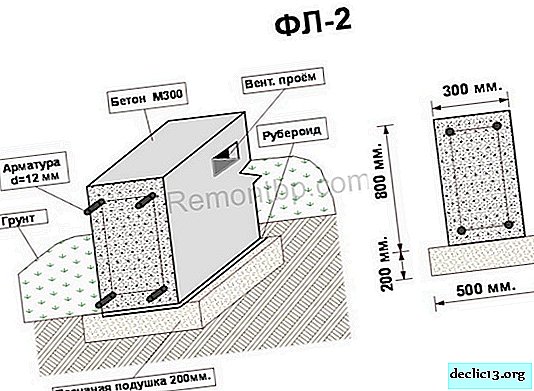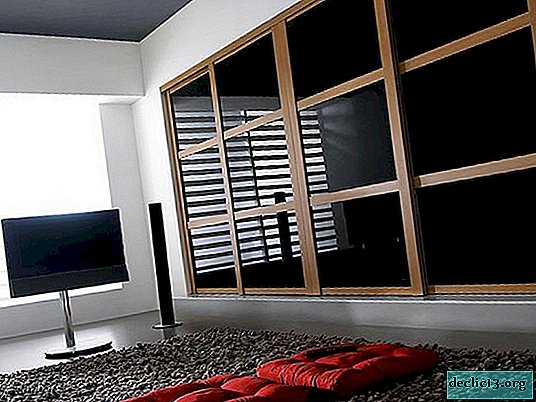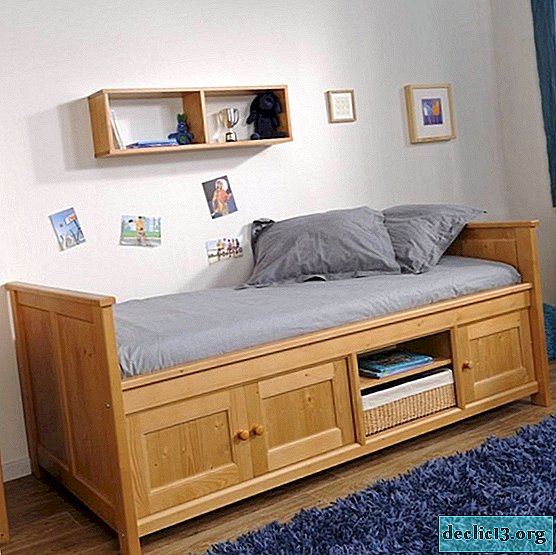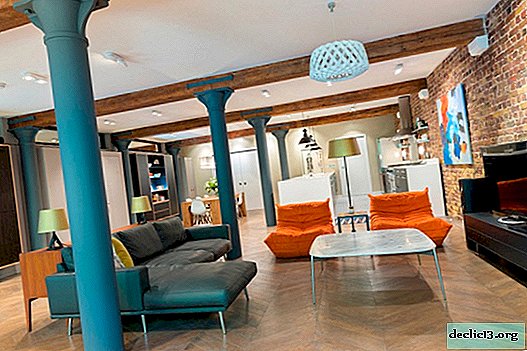The main types of foundations
This is exactly the case when "whatever you call a boat, it will sail." After all, the strength of the house depends on what the foundation will be. It is necessary to determine the quality and condition of the soil, climate, weight of the building and, depending on this, choose the option of laying the foundation suitable specifically for this area. Now there are many varieties of manufacturing, as they say, for every taste. Materials for the foundation must be selected by analyzing all of the above. And in order not to get confused among the many proposed building materials, we will understand the types, their pluses and minuses, as well as what tricks can be and what must be taken into account.
The main types of foundations: pros and cons
Strip foundation

Depending on the design features, it can be monolithic and prefabricated. The choice depends on the degree of heaving of the soil: if it is small, then the prefabricated form is suitable, if on the contrary, then the most correct choice is the monolithic strip foundation. However, do not forget that the strip foundation is not the cheapest option and it is designed for a house with heavy walls, that is, for a heavy load. Therefore, before building, you need to carefully analyze all the facts so that the conclusion of such an expensive foundation is really justified. The strip foundation can be divided into three types: rubble, brick and concrete. Each type has its own service life. If it is a rubble species, then it is 150 years old. If brick - then from 30 to 50 years. If the concrete is 50-75 years old. The pluses of the foundation are that the load is evenly distributed; then it will be possible, if necessary, to attach, redo as you want; Well, of course, in reliability. Cons in its massiveness and in the high cost of building materials.
Column foundation

This is a more economical option, but it is only suitable for the construction of lightweight houses. There is one important feature in the columnar foundation: it withstands precipitation much better than the tape foundation and tolerates soil deformation more easily. It can be made of brick, stone, concrete, but concrete, monolithic reinforced concrete.
Regarding the depth of the laying, three types can be distinguished:
- not deep - having determined how deep the soil freezes, it is laid to a third of the depth.
- Shallow - go into the ground at half the depth of freezing.
- buried - to the entire depth of freezing, and for strengthening it can be made in the form of a trapezoid, which will be like a dowel, which will only add reliability and strength to the building.
Pile foundation

The most suitable option for bulky heavy buildings and for unstable soil. In private construction, such a design is practically not used. A pile is a pole with a pointed end. They are driven in or screwed into the ground, bypassing possible floaters, mobility and abut against hard ground. In the finished foundation, each pile can withstand a load of 2 to 5 tons. It’s quite difficult to put such a foundation. Now many organizations provide such services, and at the same time, they are also responsible for the work done. So, in this case, it is better to contact specialists. But this will require considerable funds. If finances do not allow hiring workers, then wells can be drilled with a manual construction drill. The reliability of such a foundation leaves no doubt. But there are a couple of minuses: the pile foundation is not suitable for horizontally moving soils - in this case, a device of a rigid reinforced concrete grillage is necessary. Also, this type of foundation does not provide for a basement (this requires a lot of additional forces and means).
Plate (floating) foundation

It is usually used in the construction of wooden frame-panel and log houses. A feature of such a foundation is that, unlike the tape and pile, it is located under the entire area of the building. The foundation itself is a metal frame poured with concrete. Moreover, the connection frame must be rigidly connected. The advantage of such a foundation is its relative simplicity. That is, it is not difficult to do it yourself without the use of heavy earth-moving special equipment. Also, a slab foundation can be laid on a plot of land in a high level of groundwater, on heterogeneous soil. The floating foundation has the ability to move along with the movements of the soil and, thereby, the load on the walls is weakened. If we are talking about a shed or garage, then you can not put additional flooring, but use the surface of the foundation, like the floor. The disadvantage of this foundation is financial disadvantage, because a lot of money will go to concrete and metal reinforcement.
In fact, the point is not even the economic profitability, the disadvantage of a certain foundation. The whole point is what type of foundation is needed specifically for your building. Therefore, you need to proceed from a set of specific parameters and features of a real site. As mentioned above, the foundation is the main part of the structure, and therefore, how durable and long-lasting the building will be, depends on how the type of foundation is correctly selected, how accurately the soil analysis is carried out, and, of course, the quality of the foundation itself. So, if there is no way to analyze it yourself, take the trouble to invite a specialist so that the building does not turn out to be useless and unreliable, and the money is "thrown" into the wind.

















